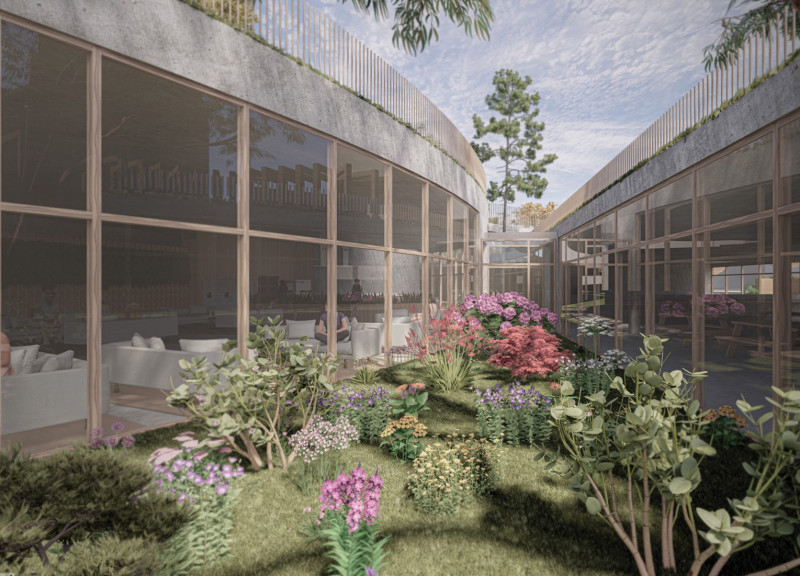5 key facts about this project
At its core, the project represents a refined interpretation of modern architectural concepts, intertwining innovation with a deep respect for traditional elements. The design approach is characterized by an emphasis on sustainability, utilizing materials and techniques that minimize environmental impact while maximizing durability and aesthetic value. The choice of materials is particularly noteworthy, as they are carefully selected to not only complement the overall design but also to enhance the building's performance and longevity. This project prominently features concrete, glass, wood, and metal, which together create a dynamic interplay of textures and colors that is visually engaging.
The architectural layout of the project is both functional and intuitive. The organization of space is executed with a clear understanding of user experience, ensuring that each area serves its purpose effectively while fostering a sense of community and interaction. Open spaces are thoughtfully integrated with more private areas, allowing for a versatile use that adapts to various activities. Natural light plays a pivotal role in the design, with large windows and strategically placed openings that not only provide illumination but also frame views of the surrounding landscape. This connection to the outdoors enriches the occupants' experience and reinforces the project’s commitment to embracing its physical context.
Unique aspects of the design include innovative structural elements that challenge conventional forms. The incorporation of modular components allows for an adaptable environment that can evolve over time, addressing the changing needs of its users. Additionally, the architectural concepts are driven by an exploration of form and function; the exterior façade is a testament to this, characterized by rhythmic patterns and angles that create visual interest and invite curiosity. This careful balancing of aesthetics with practical considerations showcases an astute understanding of contemporary architectural trends while still honoring the site’s characteristics.
Landscaping is another critical component of the project, seamlessly integrating the building with its surroundings. The landscaping design utilizes native plants and sustainable practices to enhance biodiversity while providing a natural buffer that complements the architectural form. Outdoor spaces are designed to encourage social interaction and recreation, making them an integral part of the overall experience and inviting community engagement.
Throughout the development of this architectural project, a strong narrative is communicated through every detail. From the foundational elements to the finishing touches, the project reflects a cohesive vision that prioritizes user-centered design. The careful curation of spaces, materials, and functions culminates in a setting that not only serves its intended purposes but also enriches the lives of those who interact with it daily.
For those interested in delving deeper into the architectural exploration, it is encouraged to review the architectural plans, architectural sections, and architectural designs that accompany this project. These elements provide further insights into the thoughtful architectural ideas that underpin its successful realization, showcasing the depth of consideration that has been applied throughout the design process. Engaging with these materials will enhance your appreciation of the project and its contributions to the field of architecture.























